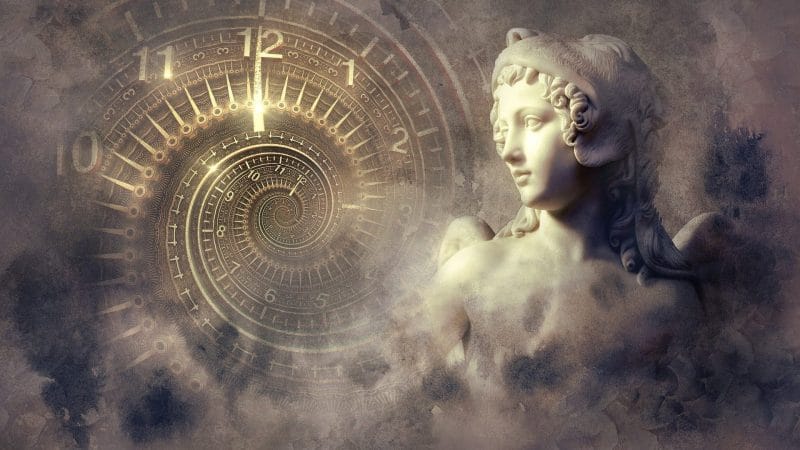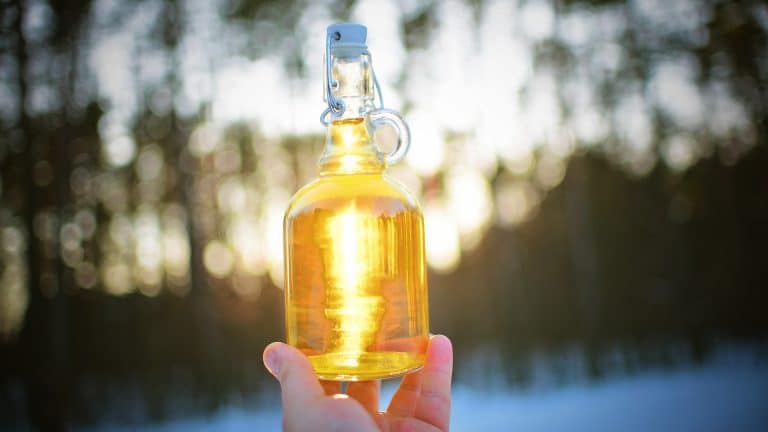The History of Marijuana: A Long & Turbulent Tale

Of all the plant species’ stories in the world, the one that tells the history of marijuana seems to be the most exciting! In other words, it has all it takes to make a thrilling Hollywood movie. From the world traveler and pleasure provider, which was both banned and praised for decades, to the mystical and beneficial plant, cannabis has seen it all.
Are you ready to see how it all started and what it is all about? If so, lay back, take a puff, and enjoy the story of marijuana!
Cannabis History: Origins
Let’s see where marijuana is from and in what ways it’s been used for centuries.
As Old as the Hills
Marijuana or cannabis is much, much older than the human race. The earliest traces of its origins date back as far as 28 million years ago! That‘s much earlier than the first humans (some 200,000 years) and yet later than the dinosaurs.
If you’ve had an image of a brontosaurus getting high in a cannabis field, we’ll just have to disappoint you. T-Rex and the gang disappeared 65 million years ago.
Where did marijuana originate? According to a new genetic study, cannabis originated from the region of East Asia (present-day China).
The researchers sequenced 82 brand new genomes and 28 already available genomes, which were then analyzed to understand the evolutionary relationships among these plants. The results showed that a group of plants from East Asia are more related to cannabis’ ancestors.
It’s believed that the process of selective breeding began during the early Neolithic period, about 12,000 years ago, while the psychoactive and fibrous cannabis strains weren’t separated from one another until 4000 years ago.
The History of Marijuana Use
Don’t assume that early humans started smoking cannabis right away! The oldest uses of hemp include fiber production for clothes and sails, shoes, edible oil, ropes, etc.
For example, hemp fiber was used for making an imprint on Yangshao culture pottery as early as 5000 BC in China (but that’s not why marijuana is called “pot”).
As for the history of smoking and the first person to ever get high, what we do know is that cannabis was enjoyed by the Proto-Indo-European tribes in 3500 BC, during their ritual ceremonies.
Namely, based on archeological research, ancient Assyrians called the plant “qunubu” or “the way to produce smoke,” which might be linked with the origin of its modern name, “cannabis.”
The Indo-Iranian tribes introduced cannabis to other cultures, such as the Thracians, Scythians, and Dacians. Their shamans were known as “kapnobatai,” or “those who walk on smoke/clouds.” These shamans burned cannabis infructescence to induce a trance.
From the evidence gathered about marijuana history, after its ritual usage, cannabis started being used for its therapeutic properties, which leads us to India.
You can find the earliest mention of cannabis in the sacred Hindu texts known as Vedas, where it’s described as one of the five sacred plants. Even the god, Shiva, was associated with cannabis.
In 1000 BC in India, cannabis was used in food and drink, linking it to the history of bhang. What is bhang? An edible made from the leaves, flowers, and buds of the female cannabis plant. Bhang was also considered to be the gift of the god Shiva (Lord of Bhang).
The next chapter in the hemp smoking history leads us to Stratford-upon-Avon, the birthplace of William Shakespeare. Scientists have evidence that the British bard smoked cannabis based on the cannabis residue found in the pipes he used (excavated from his garden).
Some studies show that, when dosed correctly, cannabis can promote creativity and divergent thinking. So, it wouldn’t come as a surprise if the Bard of Avon was hitting the “good hay, sweet hay” before his Midsummer night’s dream.
A World Traveler
Throughout the history of marijuana, it has been a true cosmopolitan. Although it is indigenous to Asia, cannabis soon began to spread throughout the world.
Historical facts about marijuana can be summed up in the following timeline:
- 2000 BC: Farmers brought marijuana to Korea.
- 2000 BC–1000 BC: Marijuana was spread to India and South Asia by Aryans.
- 2000 BC–1400 BC: Cannabis came to the Middle East and spread into Russia and Ukraine.
- Around 700 AD: Marijuana reached Africa from the Middle East.
- 850: Vikings bring marijuana to Iceland.
- 1000: Romans use hemp for their ships.
- 1200: Anglo-Saxons took German cannabis to Britain.
- 1300: Cannabis spreads from Egypt to the rest of the continent.
- 1549: Brazilian marijuana timeline begins with cannabis brought by African slaves.
- 1616: Hemp is grown in Jamestown.
- 1788: Hemp is introduced to Australia with the First Fleet.
- 1800: Marijuana reached the Caribbean.
- 1910: The US gets its cannabis from Mexico.
Quite a journey, right? However, it wasn’t calm at all. Nomadic tribes, merchants, and armies contributed to marijuana’s worldwide dominance the most, and historians left notes about its effects.
The History of Medical Marijuana
The earliest use of medical cannabis can be traced to China. In 2900 BC, the Chinese emperor Fu Hsi made references to “Ma” (Chinese word for cannabis). Many other emperors believed the plant to have healing properties since it possessed both yin and yang.
Another important figure was a Chinese emperor named Shen Nung (the Father of Chinese medicines). He recommended the plant as a medication for gout, rheumatism, menstrual problems, malaria, and absent-mindedness.
The history of marijuana can also be linked to Africa. Namely, the ancient Egyptians used cannabis to treat sore eyes, glaucoma, inflammation, and hemorrhoids. In addition to that, cannabis pollen was found in the mummy of Ramesses II.
Hemp also arrived in Northern Europe (500–300 BCE), as we can see from the records of Herodotus, the father of history, who wrote about ritual and recreational use of cannabis by the Scythians. In 1940, a gravesite of a Scythian couple discovered in Pazyryk (modern-day Kazakhstan) contained wild cannabis seeds that match Herodotus records.
Hua Tuo (140-208), a Chinese surgeon, was the first person who used cannabis as an anesthetic. He mixed the plant’s powder with the wine, which he administered before the operation.
History of Marijuana in the US
The presence of marijuana in America may be brief regarding the time period. Still, rest assured, it was filled with turmoil. Hardly has any other country in the world spent so much effort on trying to nullify it.
On the other hand, the US is one of the largest marijuana markets in the world. The CBD industry is simply booming and people are buying CBD oil without any hassle, while the pros and cons of legalizing marijuana are still enticing debates.
When did marijuana enter America? The first time hemp reached American shores was with Christopher Columbus in 1492. The Santa María’s masts and sails were made of hemp. At the time, hemp was the second most used material in the shipbuilding industry.
What’s more, his clothes were made of hemp, his Bible was made of hemp, the sailors ate hemp seeds, and the oil lamps were filled with — yes, you’ve guessed it — hemp oil.
Some suggest that the history of cannabis Sativa (hemp) begins with Columbus introducing the seeds and the species. Nevertheless, the majority of the sources claim it happened a bit later with the population of Jamestown, one of the first colonial towns in the New World.
Its settlers brought the marijuana plant (known as hemp) to North America in 1611. Throughout the colonization, hemp fiber became a vital export. So much that in 1762 Virginia gave bounties to people who manufactured hemp while imposing penalties on people who didn’t do it.
Hemp was very much loved and adored in the US as an efficient and versatile material. Several colonies demanded from their farmers to grow hemp by law. Even the Declaration of Independence was drafted on hemp paper!
Even American presidents grew hemp. For example, George Washington grew hemp at his plantation for 30 years. He was interested in the history of medical cannabis and its usage. Based on his diary entries, his marijuana had a high THC content.
Besides Washington, two other founding fathers were growing hemp—Thomas Jefferson and John Adams.
In the 1840s, marijuana became “mainstream” in the world of medicine. Doctors recommended it for various health issues, from headaches and menstrual cramps to addiction withdrawal, asthma, diabetes, anxiety, and insomnia.
In other words, marijuana was completely legal in the US, so what went wrong? The trouble came when one more marijuana species came into the states.
History of Marijuana Prohibition
It all began with the Mexican Revolution (1910-1911).
Immigrants were fleeing from Mexico into the United States, and they brought their precious remedy along. Although the majority of them were not smoking cannabis, the funny plant still gained a bad reputation.
It was enjoyed mainly by soldiers and prisoners, hence associated with violence, illegal acts, and dread.
However, the situation wasn’t all that bleak. Its medical benefits were acknowledged, and even Vanity Fair advertised it as medicine. Everything was about to change, though.
How It All Started
The history of weed entered its dark ages in 1911 Massachusetts banned marijuana, and this encouraged other states to instigate prohibition.
Britain had already proclaimed marijuana as a harmful, insanity-causing substance in the 1800s, primarily to deal with Indian rebellions. South Africa and Jamaica (!) forbade cannabis use in 1911, too. The UK, New Zealand, and Canada followed suit in 1913.
The Justification
At the time, cannabis was still listed as a medicine in the US Pharmacopeia from 1850, and this lasted until 1941. Doctors recommended it mainly as a pain reliever and for preventing nausea.
Why was marijuana made illegal is a good question. Its bad reputation emerged because it was prevalently used by socially questionable groups such as jazz musicians, bohemians, and immigrants.
Even the name marijuana was used to denote danger and spread propaganda. Up until that moment, it was just called hemp or cannabis.
As a result, more states passed prohibition laws like Colorado, Iowa, Oregon, Washington, and Nebraska.
The 1937 Marijuana Tax Act
In most articles and discussions about the US history of marijuana banning and legalization, a 1937 act is cited as the beginning of prohibition.
Still, this marijuana act did not proclaim marijuana illegal. What it did was impose enormous taxes and rules about its use. For example, if a doctor were to prescribe it to a patient, they had to give the exact address and other personal data.
Whoever was in the hold of marijuana or hemp had to pay great taxes and do tons and tons of paperwork. The Marijuana Tax Act is one of the worst laws in marijuana law history. It made it nearly impossible to use marijuana/hemp without legal consequences. For example, not paying the tax would lead to five years in prison.
In their defense, the US Federal Bureau of Narcotics (now the Bureau of Narcotics and Dangerous Drugs) argued marijuana inspired violence.
Cannabis in WW2
Laws often change in times of great need, and World War 2 was such a period for the US. The Hemp for Victory agriculture program was sudden decriminalization of weed.
Remember how hemp was essential in shipbuilding and for producing ropes? Well, hemp fiber was also used for uniforms, ropes, buttons, and other merchandise.
Today, we have plenty of high-quality synthetic fibers. Back then, the US was importing hemp fiber from the Philippines. Once WW2 started, that source was cut off, but the hemp need even increased.
American farmers were enthusiastically supported to grow as much hemp as possible. And the Marijuana Tax Act? It was put on hold.
There was even a short Hemp for Victory movie explaining the uses of hemp.
The Controlled Substances Act from 1970
This was the point in the recent history of marijuana when it all went wrong. Why you may ask? Well, it is this act that put marijuana on the list of Schedule 1 drugs.
The Controlled Substances Act was the first step in President Nixon’s strategy to deal with the opponents of his regime and an interlude to the (unsuccessful) War on Drugs.
The very first thing he had to do is demonize marijuana. Despite the efforts from healthcare experts, cannabis was listed as a Schedule 1 drug. An extremely dangerous, addictive substance with no medical potential. Marijuana legalization history is still being made due to this.
The War on Drugs 1973
The Flower Power appears unimaginable without weed. Some say it was a symbol of rebellion against authority. Or was it just good marketing, but from the authority’s side?
If you think that the War on Drugs was targeted against drugs, you are very much mistaken. For marijuana history in the US, these were the dark ages.
A man from Nixon’s team publicly declared the war was against a movement and a community — the antiwar protesters and the black community.
The seemingly noble cause of destroying a “dangerous substance” had a completely different goal. Nixon wished to deal with the antiwar movement and the black community and connecting them with marijuana use and dangerous behavior solved all his problems in this respect.
Male imprisonment rates jumped by 200% after Nixon had declared war. The forming of the DEA was another crucial point in the history of cannabis prohibition.
Unfortunately, even after Nixon finished his rule and his insane marijuana policy project, the old ways seemed to be integrated too well, and the arrests continued to multiply. The discrepancy between the whites and blacks still remained, too.
Parental anti-drug campaigns were very much focused on marijuana in the late 70s and early 80s. President Reagan set the Anti-Drug Abuse Act, and President Bush declared a new war on drugs during a TV speech in 1989.
Marijuana Legalization Timeline
You can’t keep a good pot down forever.
After decades of governments’ endeavors to outlaw cannabis for one reason or the other, the states have begun introducing laws to legalize marijuana. Here are some of the most important highlights:
- 1996: California makes history. It becomes the first state to legalize medical marijuana with Proposition 215. Marijuana is approved for cancer, AIDS, and other dangerous diseases. Arizona tries to do the same but fails.
- 1998: Several states pass medical cannabis laws, including Washington, DC.
- 2000: Colorado, Maine, and Hawaii contribute to medical marijuana history with new medical marijuana laws.
- 2003: California passes SB 420, which ensures doctors can freely prescribe medical marijuana.
- 2004: Vermont and Montana become medical marijuana states.
- 2009: President Obama becomes a marijuana advocate by stating that personal drug use is a public health issue rather than a serious crime. This is in strong opposition to the 20-year war on drugs. Federal prosecutors no longer have the authority to pursue cannabis users who obey the state law.
- 2010: California tries to make weed history and legalize recreational marijuana but fails.
- 2012: Colorado and Washington legalize small amounts of cannabis for recreational use.
- 2014: Alaska, Oregon, and Washington, DC legalize recreational marijuana. Minnesota and New York legalize medical marijuana.
- 2018: Vermont legalizes recreational marijuana. It is the first of recreational weed states to pass the law by way of the state legislature.
- Late 2018: The signing of the Farm Bill and legalizing hemp on the federal level is the brightest moment in US history of marijuana legalization. Hemp, or the cannabis Sativa species with less than 0.3% THC, is fully legal to be grown and consumed in every way imaginable.
- 2021: Marijuana is legal in 18 states and Washington, D.C., and medical marijuana is legal in 37 US states.
- 2021: The first draft of a Senate bill to federally legalize marijuana is released. This extensive bill (with 163 pages) is called the Cannabis Administration and Opportunity Act.
The bill should federally reschedule cannabis, eradicate prior convictions, allow resentencing petitions, give the states the authority to set their marijuana policies, impose a federal tax on marijuana products, transfer regulatory authority over cannabis from the DEA to the FDA, etc.
Final Notes
This popular remedy and a stress reliever has been filling cancer, epilepsy, anxiety, and depression statistics for quite some time now. The practical uses of hemp are historic. Yet, it was scrutinized and prohibited for decades, and marijuana prohibition history abounds with thousands of consumers being imprisoned and stigmatized.
So, what does the future hold for cannabis? The new history pages are being written as you are reading this. Marijuana testimonials abound, and more research is being encouraged for the greater good, but also to support the newly emerged CBD industry.
Hopefully, the US and the world will soon follow Uruguay and Canada’s example and legalize cannabis for good. We should all have the right to take advantage of nature’s green treasure.
FAQs
What did marijuana evolve from?
Historical documents and findings show us that marijuana evolved from the plant called Humulus lupulus (hops). Based on the newest studies, it originated from the region of East Asia (today’s China).
Humulus lupulus is known as a nervous system relaxant, but that’s not the only thing that links it to cannabis. For example, the plants look similar, both produce female and male plants, and both have a sedative effect.
Why is marijuana illegal in the USA?
There are many reasons. First, there is a general stigma following cannabis, which was building up for over a century. Secondly, the DEA list of drugs clearly puts marijuana in the same category as heroin — no medical properties and highly addictive.
And lastly, even though the marijuana industry is reaping billions, big pharmaceutical corporations are still much stronger. For example, the latter get most of their revenues from cancer medications.
When did marijuana become illegal?
Marijuana officially became illegal in 1937. How? The notorious Tax Act restricted its use so much that it was extremely hard to obtain any without confronting the law. For this reason, 1937 is usually taken as the year marijuana became prohibited in the US.
Furthermore, the Controlled Substance Act made it fully illegal by defining it as the most dangerous drug.
Why was hemp made illegal in 1937?
Besides the fact that, at the time, it was impossible to determine the extremely low traces of THC, the main reason was money. Hemp had a wide application as a material (it still does). It threatened to replace paper, which would mean huge losses to the cellulose industry.
The petrochemical industry was/is a strong competitor regarding fiber production too. For example, the Rockefeller family, who ruled the oil industry, did not take to hemp-sourced ethanol, which was used for Henry Ford’s Model T.
The history of marijuana in America was tempered with. Otherwise, we would probably all have cars running on hemp fuel.
Why is Emperor Shen Nung important?
The Chinese emperor is thought to be the first person ever who made a record about medical marijuana. He used marijuana as a medication for gout, rheumatism, menstrual problems, malaria, and absent-mindedness.
Who was the first person to smoke a blunt?
While we can’t know the answer to this question, we can try to pinpoint the place and the timeline. In the mid century, American companies started creating cigars made from rolled-up tobacco leaves, aka “blunts,” that weren’t very popular.
In fact, joints made blunt famous in the 80s thanks to the hip-hop culture, which played an important role in the history of marijuana.
With that in mind, we can speculate that the first blunt was smoked in the 1980s in New York City.





